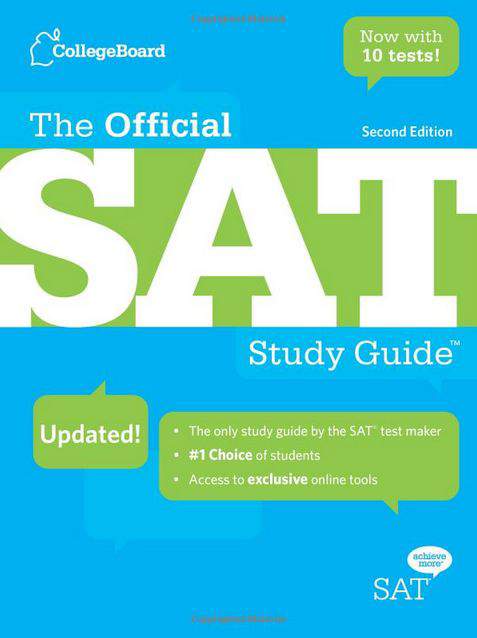

Charlotte Vilkus
Circles
Slide Duration:Table of Contents
Section 1: Basic Math
Signed Numbers
18m 58s
- Intro0:00
- The Basics: Signed Numbers0:13
- How to Think of Negative Numbers0:39
- Signed Numbers on the Number Line2:16
- Signed Numbers: Addition and Subtraction3:07
- Subtracting a Negative8:35
- The Loss of a Negative is the Addition of a Positive8:43
- Flip the sign!11:16
- Addition and Subtraction Examples12:19
- Signed Numbers: Multiplication and Division13:45
- Quick Rules15:08
- Multiplication and Division Examples17:02
Section 1: Basic Algebra
Exponents and Roots
24m 44s
- Intro0:00
- The Basics: Exponents0:09
- Base and Exponent0:42
- Squared Terms1:23
- Cubed Terms2:26
- Exponent Rules3:40
- Multiplying Terms with the Same Base5:51
- Dividing Terms with the Same Base6:48
- Exponent Term Raised to a Power8:32
- Product of Different Bases to the Same Power10:14
- Quotient of Different Bases to the Same Power11:57
- The Basics: Radicals17:24
- Square Roots19:39
Divisibility
16m 45s
- Intro0:00
- The Basics: Divisibility0:12
- Divisibility Tricks3:07
- The Rules3:44
- Examples of Quickly Determing what a Number is Divisibly by9:44
Prime Factorization
10m 1s
- Intro0:00
- Prime Numbers and Prime Factorization0:22
- How to: Prime Factorization2:27
- Bigger Divisors5:10
- Finding all Factors of 28 and 2105:52
Powers of 10
8m 56s
- Intro0:00
- The Basics: Powers of 100:15
- Multiplying and Dividing by Powers of 102:59
- Dealing with Multiplication3:37
- Dealing with Division5:16
- Example Set6:05
Fractions
12m 50s
- Intro0:00
- The Basics: Fractions0:09
- Fractions as Part of a Whole0:46
- Equivalent Fractions1:10
- Fractions: Addition and Subtraction4:11
- Finding the Common Denominator5:25
- Fractions: Multiplication and Division7:27
- Division: Multiplying the Reciprocal (Flip It)8:53
- Fractions: Comparing Fractions10:36
- Determining the relationship between fractions11:54
Algebraic Expression
17m 39s
- Intro0:00
- The Basics: Algebraic Expressions0:11
- Algebraic Expression Definitions1:54
- Simplifying Algebraic Expressions5:12
- Identifying Like Terms5:23
- Using Coefficients to Add and Subtract Like Terms6:14
- Combining Like Terms8:00
- Multiplication of Algebraic Expressions9:24
- Multiplying Two Terms: Coefficients and Variables9:38
- Combining Like Variables in Multiplication10:15
- Multiplying Expressions by a Term12:08
- Example 1: Multiplying Out and Simplifying13:45
- Example 2: Multiplying Out and Simplifying15:18
Equations
6m 7s
- Intro0:00
- The Basics: Equations0:10
- Valid Operations on an Equation0:26
- Isolate the Variable3:24
Function Evaluation
10m 50s
- Intro0:00
- The Basics: Function Evaluation0:10
- Function Definition and Notation2:23
- Function Evaluation Examples4:55
- Function Evaluation Mistakes to Avoid8:47
- Evaluation of Multiple Functions9:20
Section 2: Geometric Concepts
Geometric Terms and Notation
8m 36s
- Intro0:00
- The Basics: Geometric Terms and Notation0:15
- Geometric Notation6:01
Angles
18m 46s
- Intro0:00
- The Basics: Angles0:09
- Classifying Angles1:40
- Acute Angles1:55
- Right Angles2:21
- Obtuse Angles2:54
- Straight Angles3:46
- Angle Relationships4:13
- Complementary Angles4:28
- Supplementary Angles5:25
- Bisected Angles6:20
- Angles at Intersections7:14
- Parallel Lines and Angles9:50
- Drawing Two Intersections to Determine Equal Angles10:31
- Angle Rules11:20
- Shapes and Angles14:48
- Angles in a Triangle15:23
- Angles in a Quadrilateral15:40
- Determining the Number of Angles is Larger Shapes16:58
Triangles
21m 25s
- Intro0:00
- Triangle Basics0:12
- Special Triangles: Isosceles and Equilateral5:29
- Special Triangles: Right Triangles11:33
- Special Triangles: 45, 45, 90 Triangles18:49
Circles
16m 34s
- Intro0:00
- The Basics: Parts of the Circle0:11
- The Diameter1:04
- The Radius2:08
- Arcs and Sectors3:41
- Arc3:47
- Sector6:41
- Using Fractional Weights7:32
- Tangent and Concentric8:39
- Lines that are Tangent to Circles8:47
- Tangent Circles10:02
- Concentric Circles11:02
- Angles in a Circle11:55
- Half Circles and Quarter Circles12:19
- Proportional Areas and Circumferences for Circle Parts13:29
- Inscribed angles14:37
Volume and Surface Area
10m 53s
- Intro0:00
- The Basics: Volume0:17
- Volume Equations1:52
- Equation for the Volume of a Cube2:30
- Equation for the Volume of a Cylinder3:26
- Finding other Volumes4:14
- The Basics: Surface Area5:26
- Surface Area of a Cube6:30
- Surface Area of a Cylinder8:15
Section 3: Advanced Algebra
Foil
11m 2s
- Intro0:00
- The Basics: Foil0:16
- Foil Examples2:34
- Skip Foil: Memorize These6:22
Factoring
28m 35s
- Intro0:00
- The Basics: Factoring0:12
- Factoring: Pull out the GCF1:07
- Example of Pulling Out the Greatest Common Factor3:41
- Factoring: Difference of Squares5:30
- Examples with Difference of Squares Factorizations6:16
- Factoring: General Quadratic Equations9:35
- Zooming in on C10:12
- Factoring Given Quadratic Equations12:30
- Factoring: Special Quadratic Expressions17:39
- How to Decide if You Need a + or -19:37
- Using Factoring in Rational Expressions21:43
- Steps: Take out the GCF, Factor, and Cancel22:15
- Factoring in Rational Expressions: Examples23:48
Systems of Equations
28m 57s
- Intro0:00
- The Basics: Systems of Equations0:19
- Equations with Infinite Solutions0:44
- Number of Equations Should Match the Number of Unknowns2:41
- Why Manipulation and Combination is Often the Best Method4:34
- Why Addition and Subtraction of Equations is Valid7:23
- The Most Important Step--The Common Coefficient10:41
- Manipulation and Combination: Steps13:50
- Substitution15:49
- Which Method Should Be Used?20:13
- How to Solve Problems with Three Equations and Three Unkowns22:58
- Three Equation Example24:22
Distance Between Two Points
11m 55s
- Intro0:00
- The Basics: Finding the Distance0:13
- Breaking Apart X and Y Cooridinates0:48
- Using Pythagorean Theorom2:53
- The Distance Formula4:26
- Example 1: Plugging into the Formula6:18
- Example 2: Using the Given Length to Find a Missing Coordinate8:20
Intercepts
6m 32s
- Intro0:00
- The Basics: Intercepts0:11
- The x-intercept0:43
- The y-intercept1:44
- Determing the Intercepts3:05
- The Special Case: b4:37
Section 4: Statistics
Average
13m 28s
- Intro0:00
- The Basics: Averages0:11
- Finding the Average2:26
- Rearraning the Average Equation2:59
- Average Examples3:48
- Finding the Missing Value4:32
- The Basics: Weighted Averages6:25
- Fractional Weight Method6:54
- Sum and Retake Method7:48
- Weighted Average Examples8:30
- Example Using the Sum and Retake Method10:50
Median, Mode and Range
10m 8s
- Intro0:00
- The Basics: Median0:23
- How to Find the Median1:01
- Quick Median Examples1:23
- The Basics: Mode5:10
- How to Find the Mode5:16
- Quick Mode Examples5:28
- The Basics: Range7:20
- How to Find the Range8:06
- Quick Range Example8:28
Section 5: The Rest
Rates
17m 49s
- Intro0:00
- The Basics: Rates0:11
- Using Units in Rate Problems1:18
- The Classic Rate Problems, d=rt2:13
- Dealing with Time in Rates2:47
- Changing Minutes to Seconds and Vice Versa3:40
- Changing Hours to Minutes and Vice Versa4:41
- The Big One: Seconds to Hours5:19
- Combining Multiple Rates6:31
- Which Questions to Ask7:14
- Set Up Two Equations8:59
- Solving Rates9:32
- Quick Example: Using d=rt10:03
- Solving Multiple Rates12:29
Sequences
10m
- Intro0:00
- The Basics: Sequences0:11
- When Sequences Are Just Patterns1:14
- Arithmetic Sequences2:24
- Using the Arithmetic Sequence Equation3:11
- Geometric Sequences5:24
- Using the Geometric Sequence Equation6:08
- Geometric Series that Alternate Between Negative and Positive Elements8:02
Sets
10m 21s
- Intro0:00
- The Basics: Sets0:08
- How to Represent Sets0:25
- The Union of Sets--Joining the Two Together1:33
- The Intersection of Sets--Where the Two Meet, What they Share2:25
- Sets: Intersection and Union3:56
- Venn Diagrams6:21
- Representing Two Sets6:27
- Representing the Union7:17
- Representing the Intersection7:55
- Box in Numbers Outside of the Set8:16
Probability
8m 52s
- Intro0:00
- The Basics Probability0:10
- The Scale of Probability0:34
- How to Calculate Probability1:42
- How to Solve Probability Problems2:52
- A Probability Example4:51
Combinations and Permutations
7m 22s
- Intro0:00
- The Basics: Combinations0:11
- Combination Equation1:49
- The Basics: Permutations4:16
- Permutation Equation6:18
Loading...
This is a quick preview of the lesson. For full access, please Log In or Sign up.
For more information, please see full course syllabus of GRE/ACT/PSAT Math
For more information, please see full course syllabus of GRE/ACT/PSAT Math
GRE/ACT/PSAT Math Circles
Lecture Description
In this lesson our professor Charlotte Vilkus crams in everything you need to know about circles into one easy to understand video!
Bookmark & Share
Embed
Share this knowledge with your friends!
Copy & Paste this embed code into your website’s HTML
Please ensure that your website editor is in text mode when you paste the code.(In Wordpress, the mode button is on the top right corner.)
×
Since this lesson is not free, only the preview will appear on your website.
- - Allow users to view the embedded video in full-size.
Next Lecture
Previous Lecture














































1 answer
Last reply by: Junyu Zhu
Mon Dec 30, 2013 12:02 AM
Post by Cherise Ocen on May 11, 2013
where did you get the 18 in a=18pie from? wouldn't the radius be 6 ?